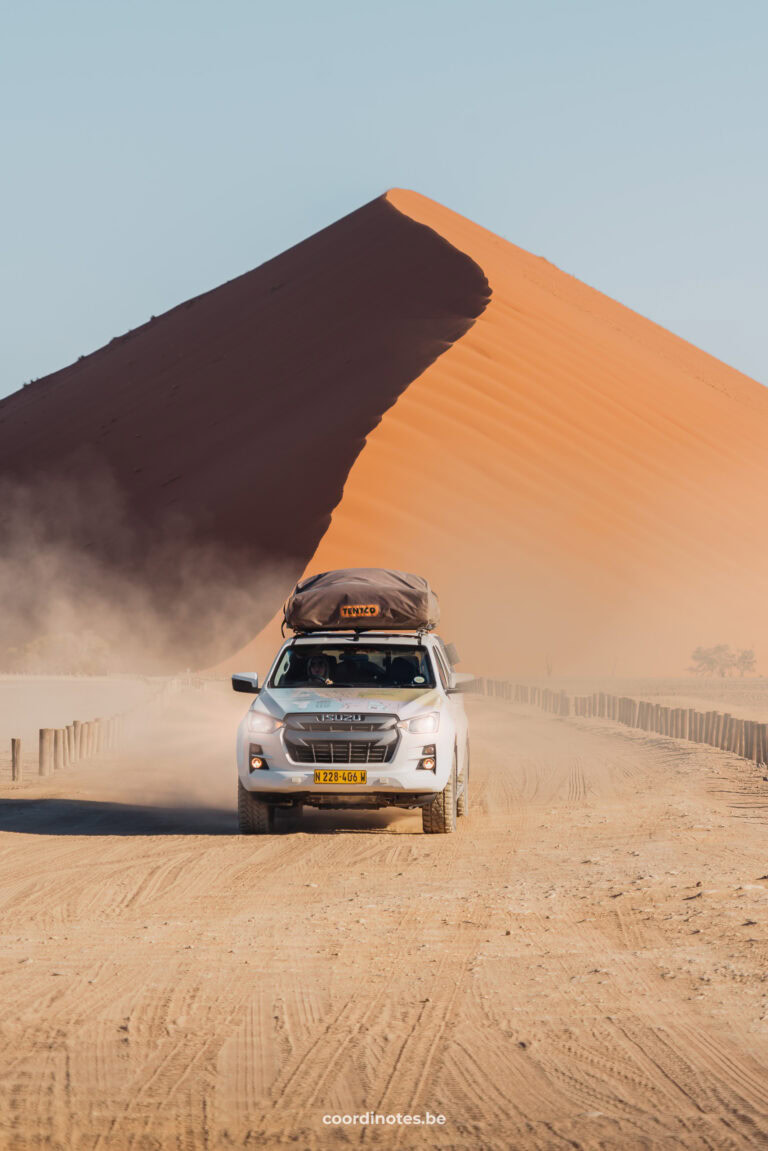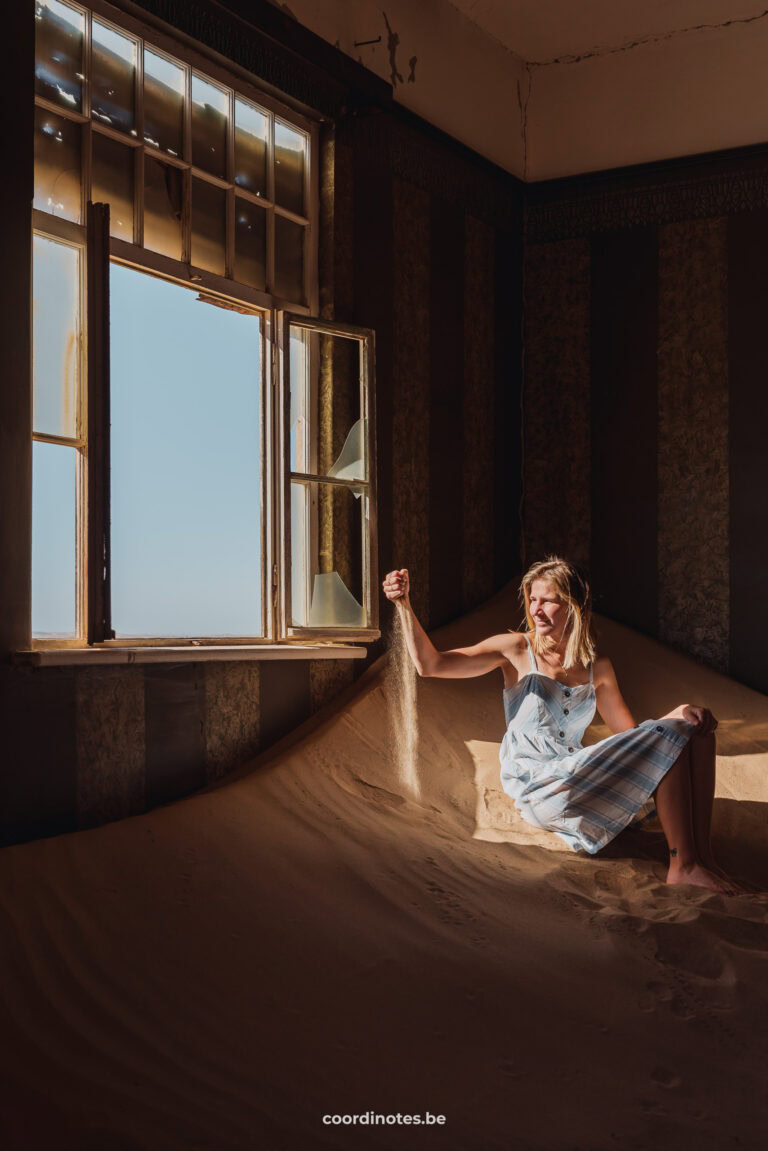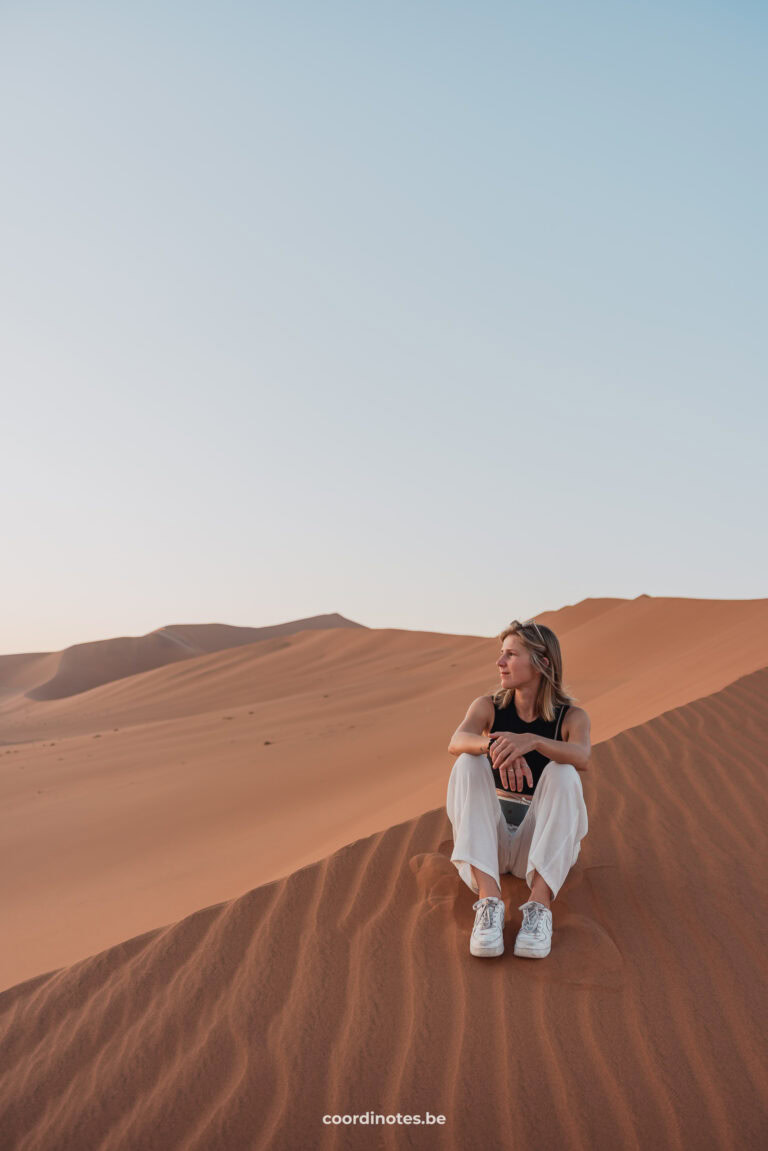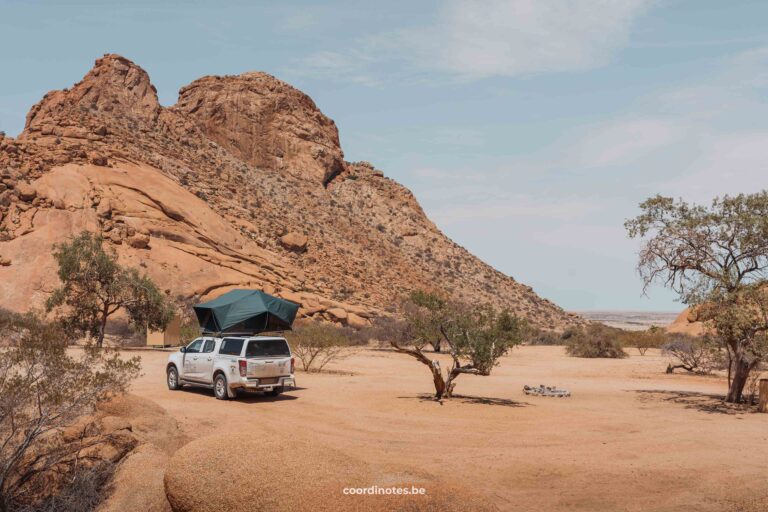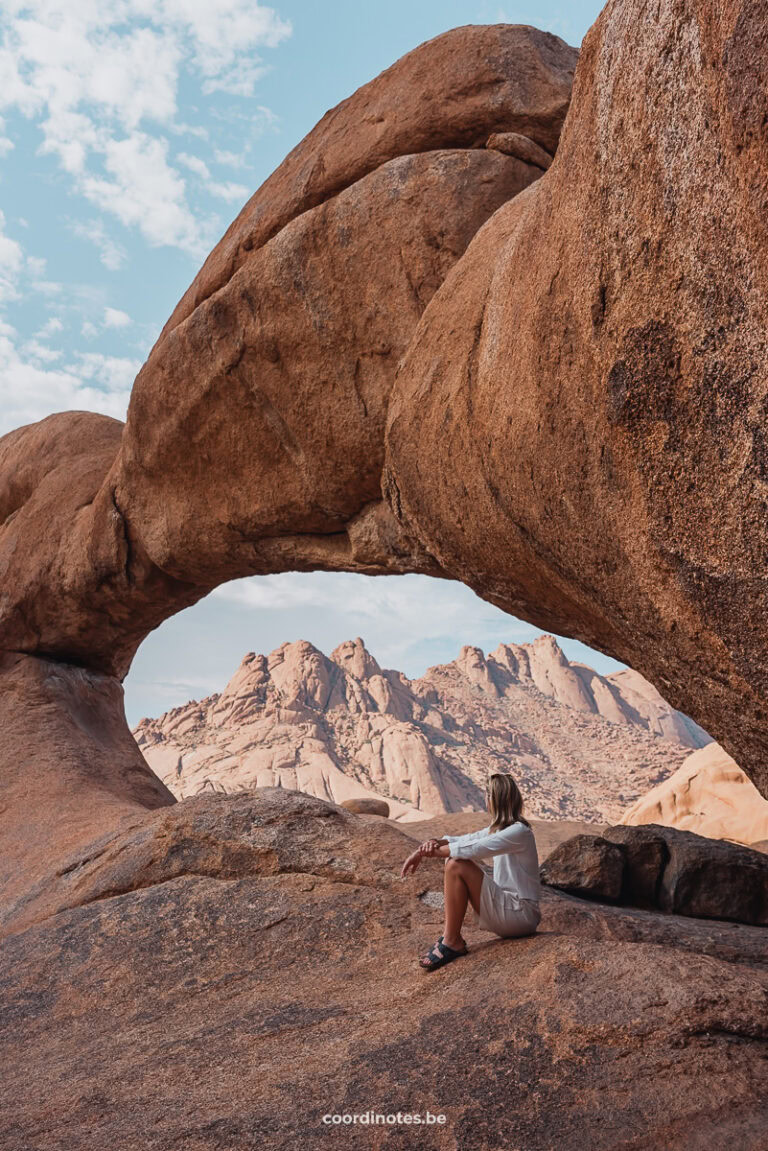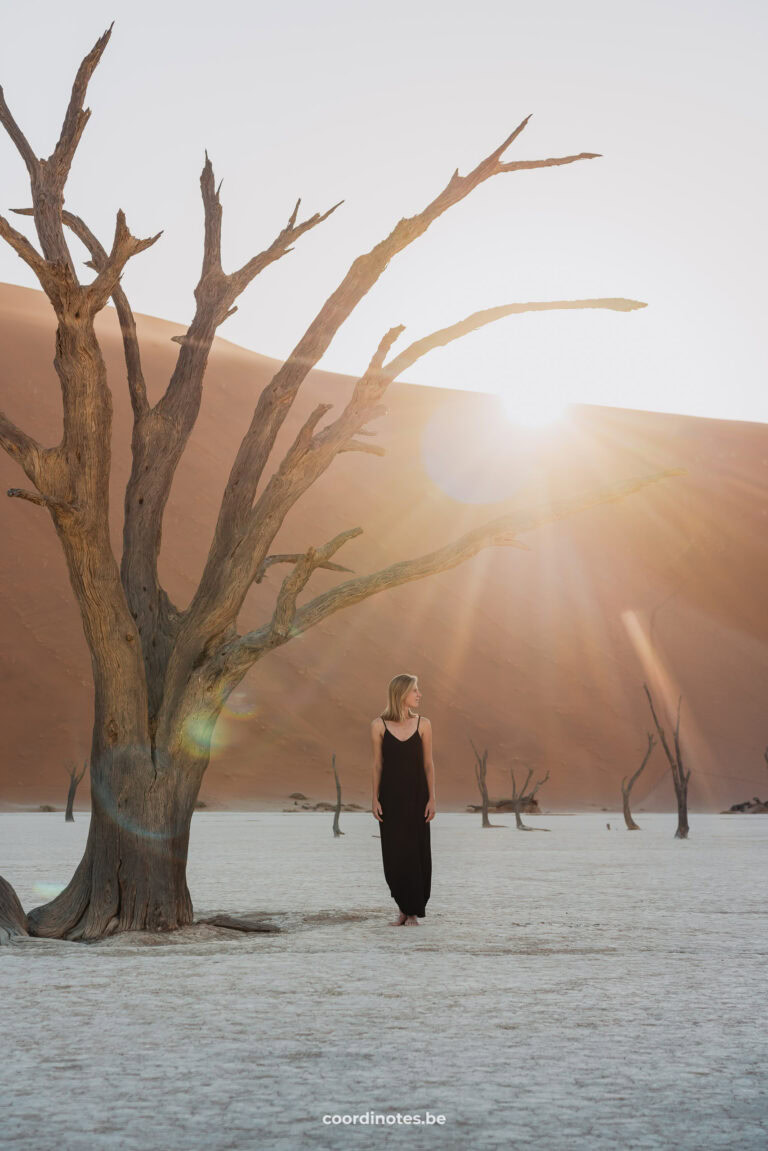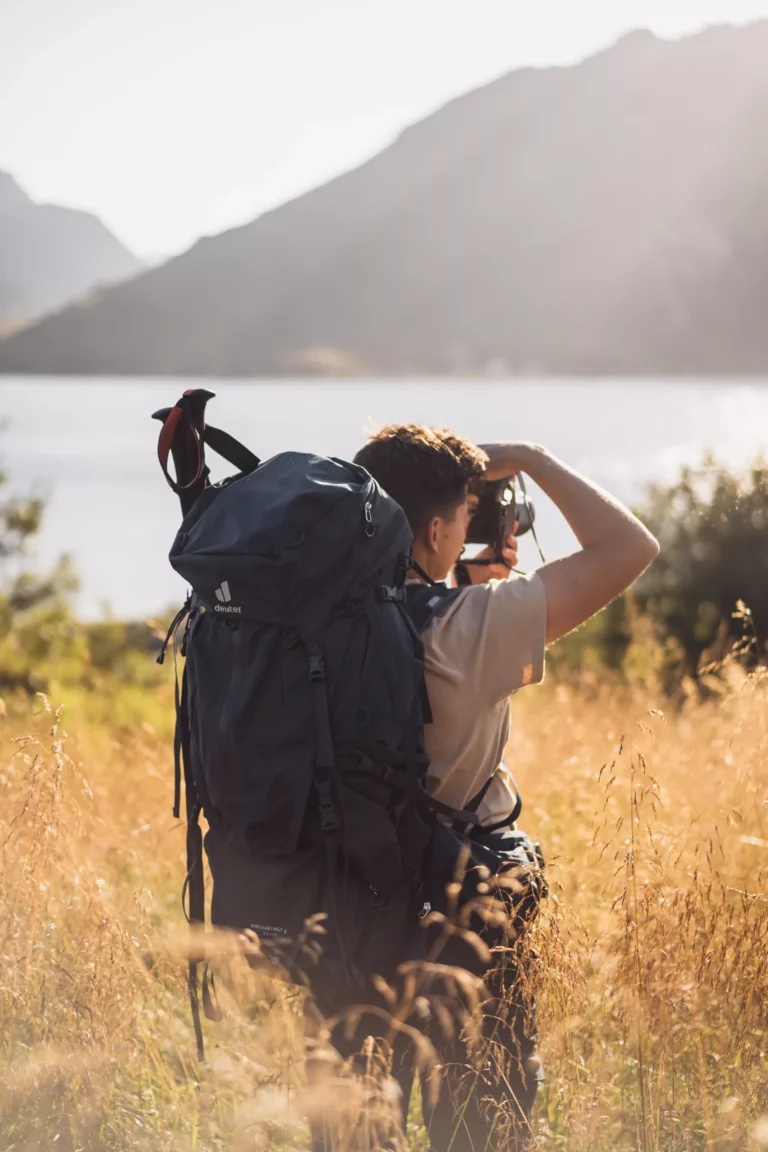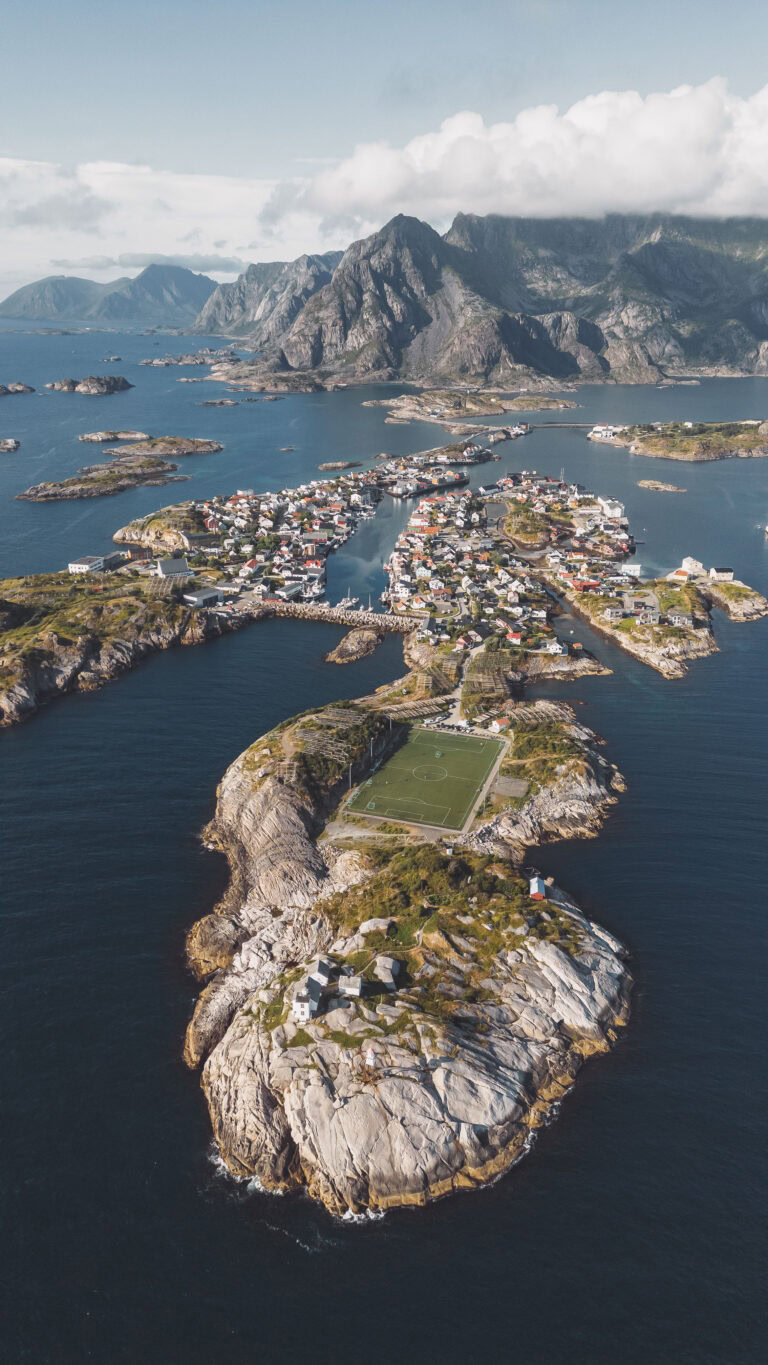Overview
This post may contain affiliate links, which means we may receive a small commission, at no extra cost to you, if you make a purchase through our link.
This is a free way to support us and allows us to continue creating even more inspiring travel guides. Thank you for supporting the love we put into Coordinotes!
About Waterberg Plateau
The Waterberg Plateau National Park is a national park on the Waterberg Plateau in Central Namibia. It is about 50 km long, up to 16 km wide and rises more than 200 meters above the surrounding plains. The national park was named after the impressive sandstone table mountain, called Waterberg. This mountain in turn, owes its name to the springs that emerge on the lower slopes and the lush vegetation that grows here in contrast to the arid surrounding plains. In 1972, Waterberg and around 405 square kilometers of its surrounding lands were declared a nature reserve.
The plateau is largely inaccessible from beneath. That’s why in 1970, they decided to relocate some endangered animal species to the plateau. In this way, they were protected from predators and poachers to prevent them from becoming extinct. The project was such a success that Waterberg Plateau National Park now supplies rare animal species to other national parks in Namibia.
The national park is mostly known for its abundance of wildlife with over 90 mammals, 200 bird species, scores of reptiles and some rare species of antilopes. In addition to all the living animals here, you will also find 200 million year old dinosaur footprints in this park. Quite fascinating, don’t you think?
The first people who lived in this area were the San people. They left rock engravings believed to be several thousands years old. Until late 1960s, a small tribe of this people were still living their traditional lives here.
Historically, a major event has also taken place in the national park. At the beginning of the 20th century, the Ovaherero people lost their last battle against the Germans at the foothills of the Waterberg Plateau. They were forced to retreat and thousands of them were killed. Many others died in the Kalahari Desert, where they had no food or water. It is estimated that about two-thirds of the Ovaherero population died during this period. But German soldiers have also lost their lives here too. Their graves can still be seen near the rest camp at the beginning of the park.
Practical
Park entry fee (valid for 24hrs)
150 NAD per adult per day
50 NAD per vehicle per day
The park gates opens at 6am and closes at 9pm in winter and at 10pm in summer.
Day visitors must leave the park before 6pm!
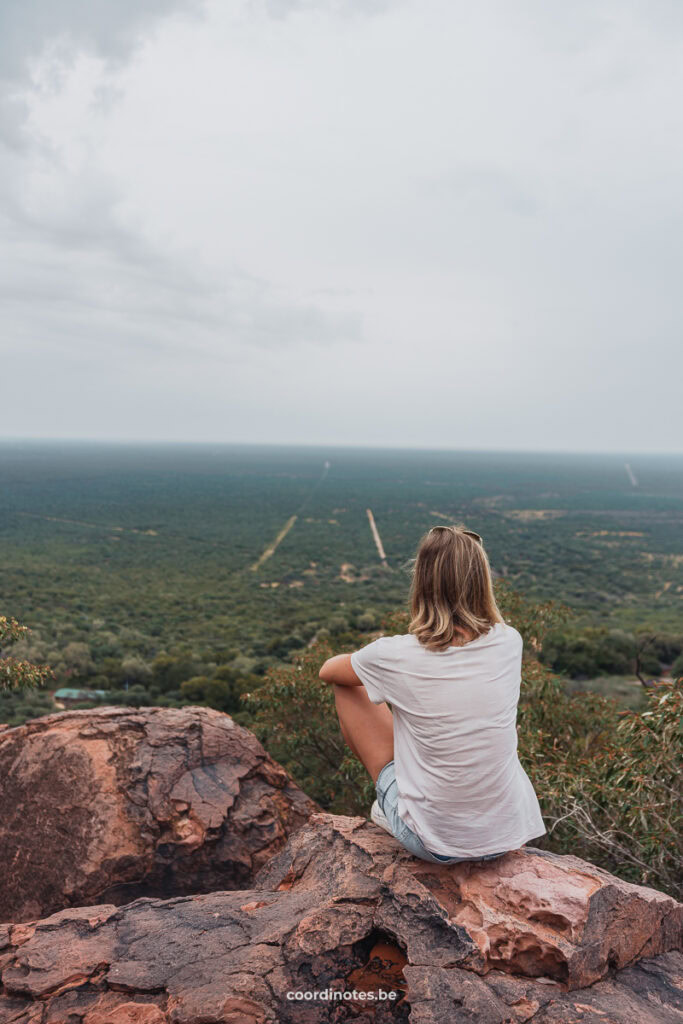
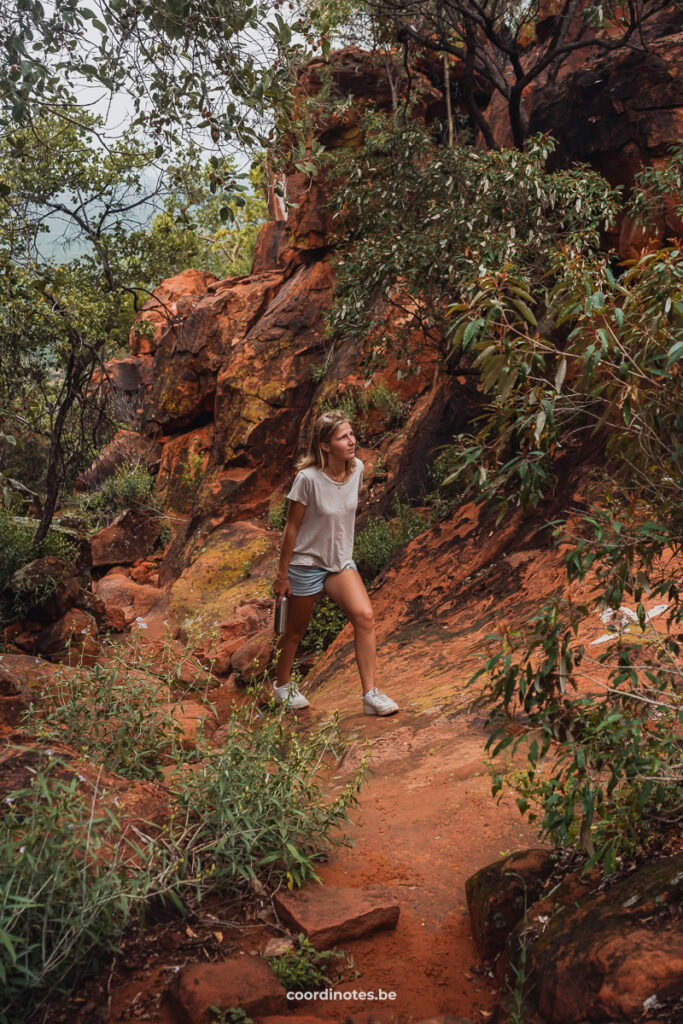
Advertising
No time to read now?
Save this post on Pinterest!
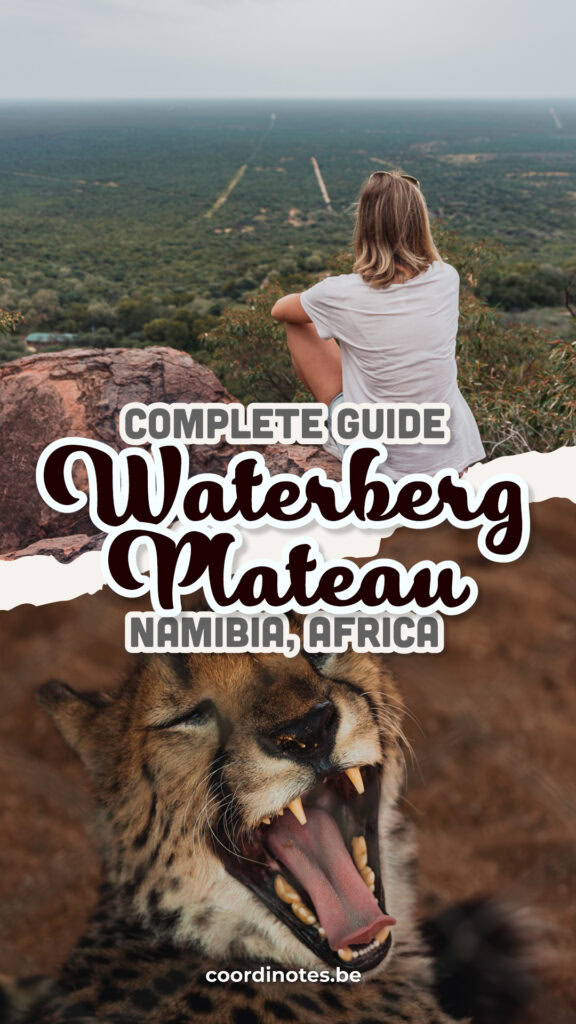
Things to Do
There are lots of things to do in Waterberg Plateau National Park. You can choose from various activities from two different rest camps: Waterberg Camp of NWR (Namibian Wildlife Resorts) and Waterberg Wilderness Private Nature Reserve. Below, we have listed which activities you can do from which camp.
Activities from Waterberg Rest Camp
Hiking
One of the most popular things to do in Waterberg Plateau National Park is hiking.
There are several short, unguided hiking trails, starting from the Waterberg Camp – NWR Reception. When you register here, you will receive a map with the different walking routes. We definitely recommend the trail to the Mountain Viewpoint. It is not a long route, but it is not an easy route either, as you have to clamber over quite large boulders. We have also tried the Aloe circle, Fig Tree Walk and Mission way, but we didn’t enjoy it because of the large spider webs, including big spiders, on the trails.
For more experienced hikers, there are also overnight wilderness hiking trails available (three or four nights). These overnight trails must be booked in advance with NWR.
Game Drives
It is not allowed to self-drive through the Waterberg National Park yourself, but you can join one of the daily 4×4 games drive from the NWR Rest Camp. There are game drives in the morning or in the late afternoon. For 3 hours, a guide will drive around you across the Waterberg plateau, past the various water holes, looking for some fascinating wildlife. These game drives can be booked at the NWR Reception and cost 650 NAD per person.
Activities from Waterberg Wilderness Private Nature Reserve
Note: Activities and all guided and unguided hikes at Waterberg Wilderness Private Nature Reserve are only available for overnight guests at Waterberg Wilderness.
Hiking
At Waterberg Wilderness Private Nature Reserve, there are both guided and unguided hikes.
During the Plateau Hike, a guide climbs the 150m high plateau with you. Along the way, this guide will explain you more about the local fauna and flora in the park and give you some interesting insights about the people living in this area. This hike takes about 2 to 3 hours and is done in the morning.
The Honeymoon Sundowner is a similar hike, with the difference that you can also enjoy a glass of bubbles during a magical sunset, even if you’re not on honeymoon.
Besides those 2 guided hikes, there are also 5 unguided hiking trails at Waterberg Wilderness. Along these marked nature trails, you will pass some incredible viewpoints and information boards with stories about the spring, animals and occurrences. You can combine multiple trails together or hike just one. Note that these hikes do not take you to the top of the Waterberg. Only during the guided Plateau Hike, you will climb to the summit.
History Path
The history trail is actually another short and easy hiking trail of about 2 kilometers. This path takes you on a little journey back in history to a site of the Battle of Waterberg and to a camp of Herero refugees. Along the way, you will come across various information boards, explaining more about the shared history of Germans and Hereros.
Rhino Drive
During a Rhino Drive, a guide will drive you through the savannah at the foot of the Waterberg. You will mainly search for rhinos, but you may also encounter other interesting wildlife such as giraffe, oryx, red hartebeest and eland. A Rhino drive takes around 2-3 hours and is done in the afternoon.
Rhino Tracking
Even a little more exciting than the Rhino Drive is the Rhino Tracking. During this activity, you go on foot with a tracker in search of rhinos, but also other wildlife like oryx, giraffe, kudu or red hartebeest. If you are lucky, you might come face to face with rhinos. Note that this activity is physically more challenging. The entire tracking takes about 3 to 4 hours and takes place, early in the morning.
Advertising
Other Things to Do Near Waterberg
Dinosaur Footprints
Near Kalkfeld, you will find some real, centuries-old fossilized dinosaur footprints. These tracks are imprinted in the rocks and are believed to be 200 million years old, from a time called the Triassic period.
Cheetah Foundation Fund
The Cheetah Foundation Fund (CFF) is an international organization, dedicated to saving cheetahs in the wild. It’s a center for conservation and education, where you can learn more about the cheetah and why they need to be saved. You can either join a tour through the center and attend the feeding of the cheetahs, that can not be released in the wild anymore. Alternatively, you can go on a cheetah drive through the park and look for the cheetahs, that are being prepared for release back into the wild.
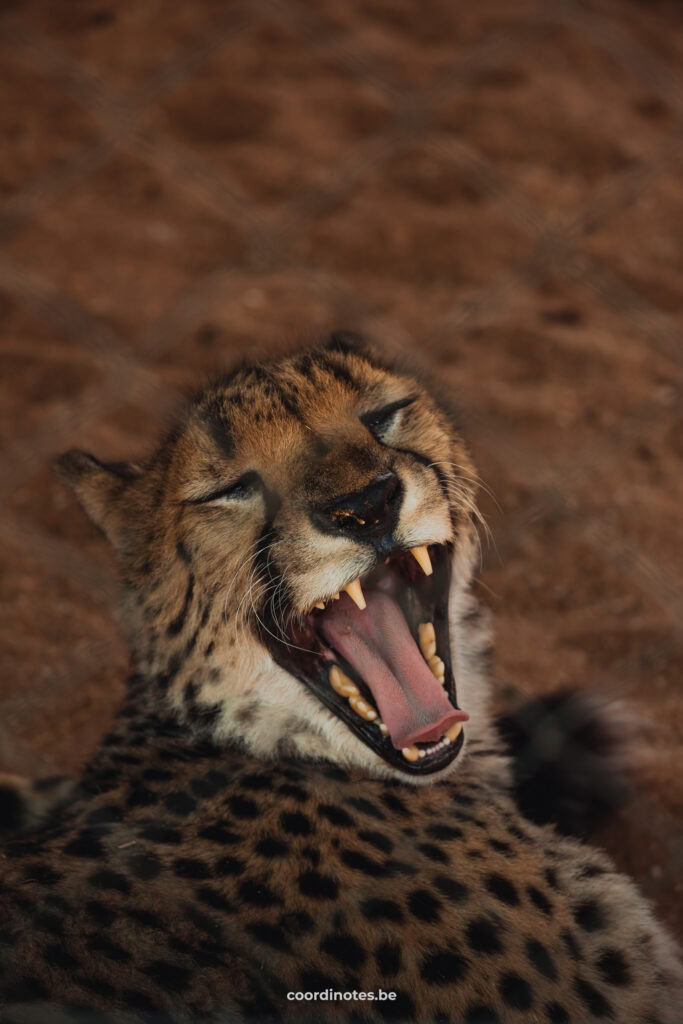
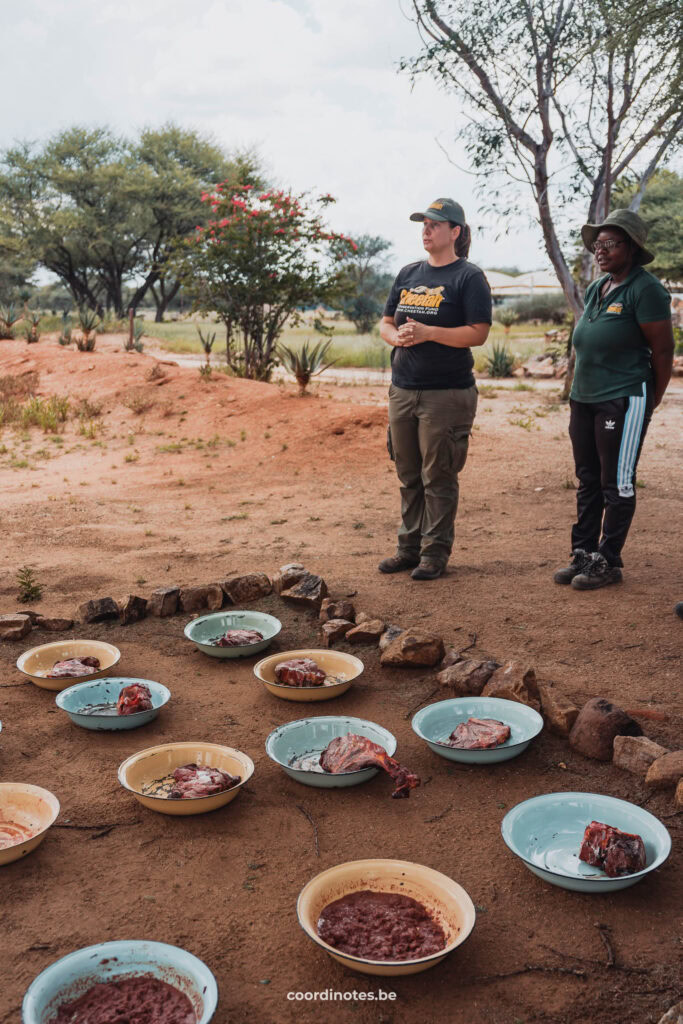
Okonjima Nature Reserve - AfriCat Foundation
Okonjima is a nature reserve that is home to the AfriCat Foundation, a non-profit organization for the long-term conservation of Namibia’s large carnivores and other endangered species. These big carnivores roam freely in the reserve and you can encounter them during different activities, like a game drive or a leopard tracking. Note that, if you want to visit this place, you will also have to stay here for a night. You will have to book well in advance, because it fills up quickly.
How many days
We think that one day is enough to visit the Waterberg Plateau. To make the most of this one day, you can stay a night in the park. If you want to do various activities such as a rhino tracking and a game drive, you will probably have to stay 2 days.
Tip: Permits are valid for 24 hours. This means that even if you stay in the park overnight, you still have to pay for a permit for only 1 day.
Advertising
Best Time to Visit
Not only for hiking, but also for wildlife viewing, the dry season (May to October) is the perfect time to visit the Waterberg Plateau Park. During these months, there’s less vegetation and animals have to gather around the waterholes to find water, making it easier to spot and track them. The weather is also more pleasant and drier for various activities.
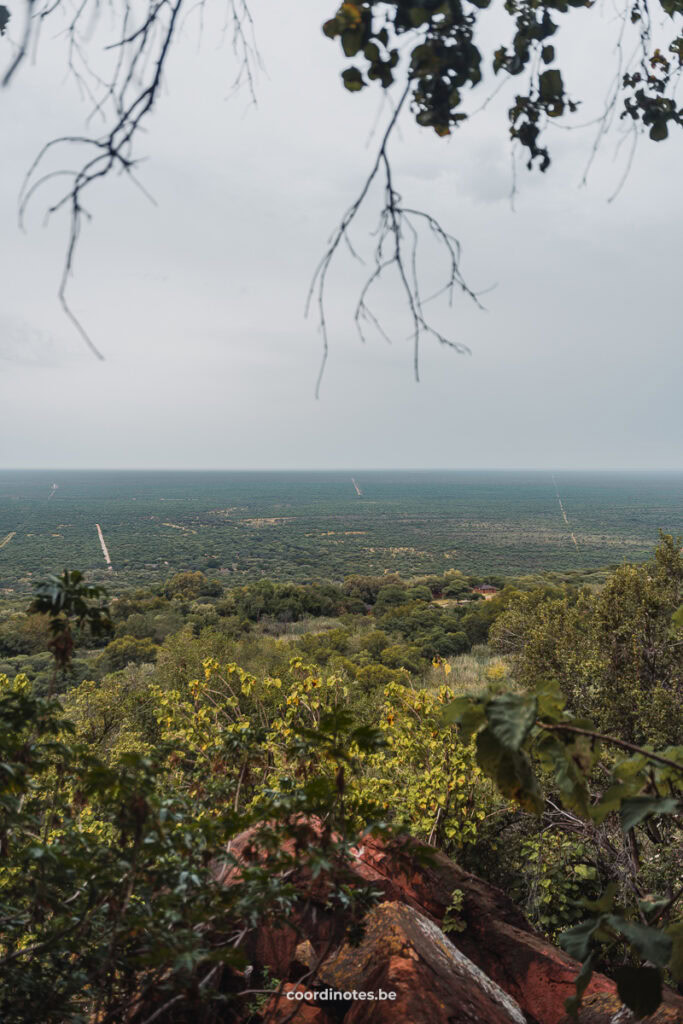
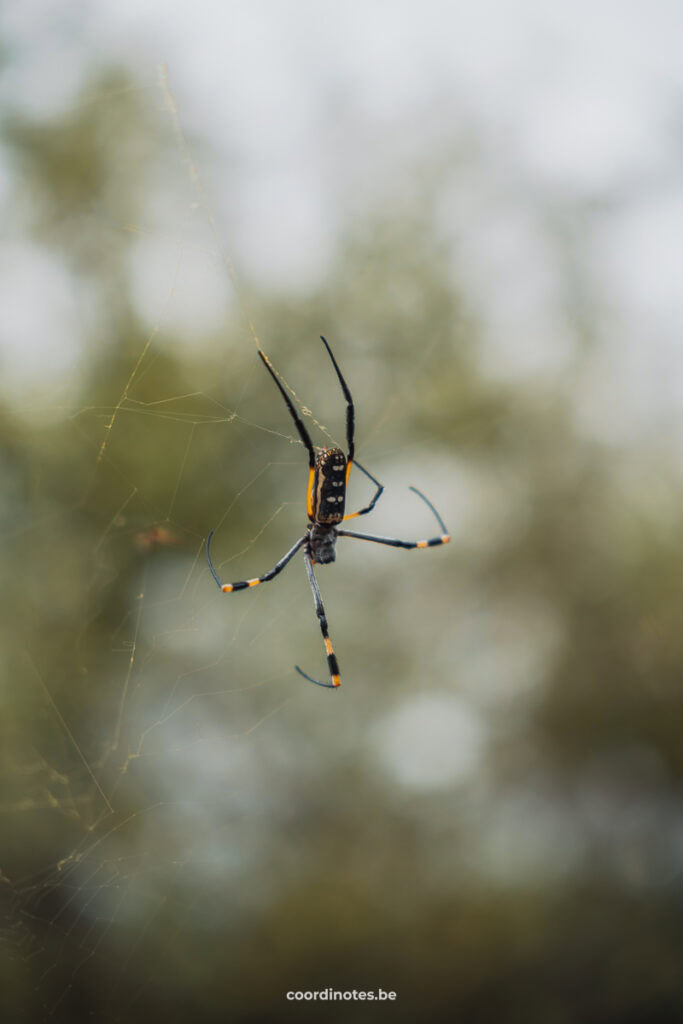
Where to stay
Depending on which activities you want to do, you can either stay at Waterberg Resort (NWR) or at Waterberg Wilderness. Note that you can only participate in the activities and hiking trails of Waterberg Wilderness Private Nature Reserve if you stay the night with them.
Waterberg Resort (NWR)
At Waterberg Resort, you can stay at the campsite (380 NAD pp/night) or in one of the lodges. You can book your stay at Waterberg Resort on https://www.nwr.com.na/resorts/waterberg-resort/
Waterberg Wilderness Private Nature Reserve
Waterberg Wilderness Private Nature Reserve has 3 small lodges and 2 campsites.
Campsites (400 NAD pp/night)
- Waterberg Plateau
- Andersson Campsites
Lodges
- Waterberg Plateau Lodge (3700 NAD
- Waterberg Wilderness Lodge
- Waterberg Valley Lodge
Outside Waterberg Plateau National Park
If everything inside Waterberg National Park is full or you want a nice and cheaper alternative nearby the national park, we can highly recommend Hamakari Guest Farm & Campsite. The campsites have a beautiful view of Waterberg and are located next to a plain full of Springboks and Wildebeests. The price was 300 NAD pp/night. An alternative lodge might be the Waterberg Guest Farm (no campsite!).
Extra tips
Bring sunscreen, a hat and sunglasses
During the day, it can get very hot and the sun can be very harsh. Therefore, always bring sunscreen, a hat and sunglasses on your activities.
Start Early
When you start your day early, the temperatures are still more pleasant for different activities. Once the sun is up, temperatures can rise very quickly. Wildlife is also often more active in the morning.
Bring Water and Snacks
Some activities such as hiking can be quite tiring. Therefore, always bring enough water and snacks!
Wear proper shoes
Wear decent shoes during your activities. The surfaces in Waterberg Plateau can be very uneven. There are also snakes, scorpions and other unpleasant insects, so it is better to wear closed shoes.
Win-Win for everyone
Did you know that, if you buy or book something through our links, we receive a small commission?
However, you still pay the same and therefore have no extra costs! So a win-win for everyone. This way, we can continue to add even more travel inspiration and tips to this blog for your next adventure. Thanks a lot!
Thank you for visiting our blog
We hope you find our free travel guides and tips useful. If you want, you can support us virtually by ‘buying us a coffee‘.
Every contribution, no matter how small, is greatly appreciated and will help us continue to share our passion with you and grow this blog.
Win-Win for everyone
Did you know that, if you buy or book something through our links, we receive a small commission?
However, you still pay the same and therefore have no extra costs! So a win-win for everyone. This way, we can continue to add even more travel inspiration and tips to this blog for your next adventure. Thanks a lot!

